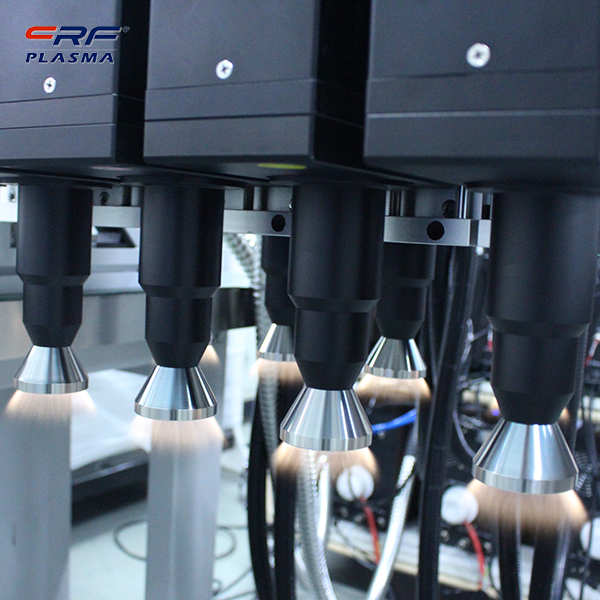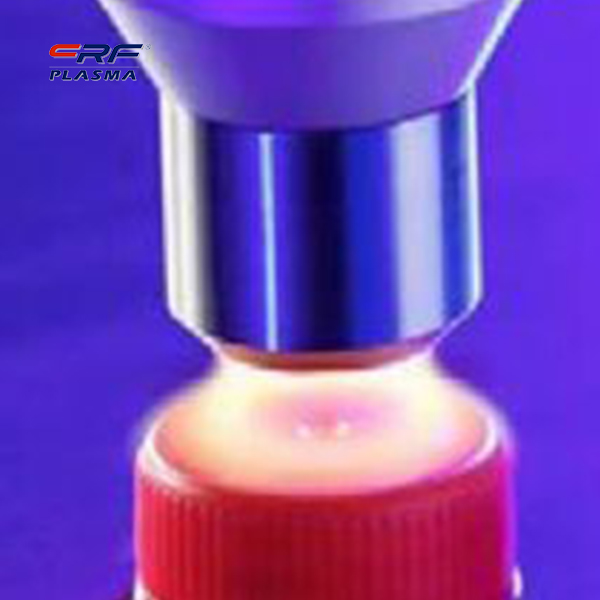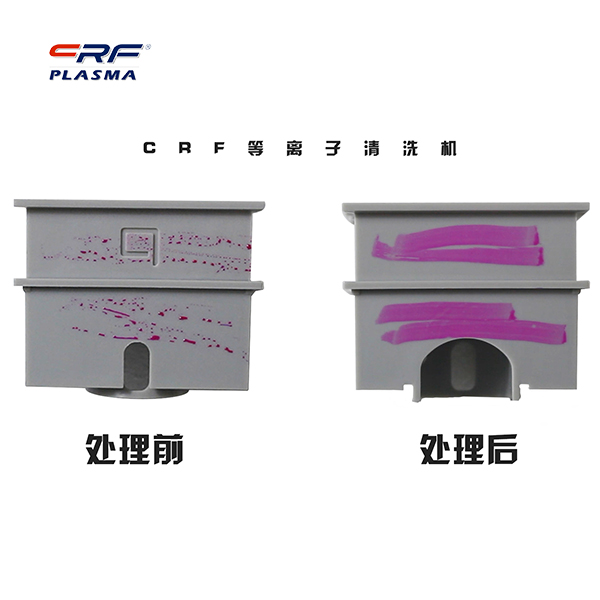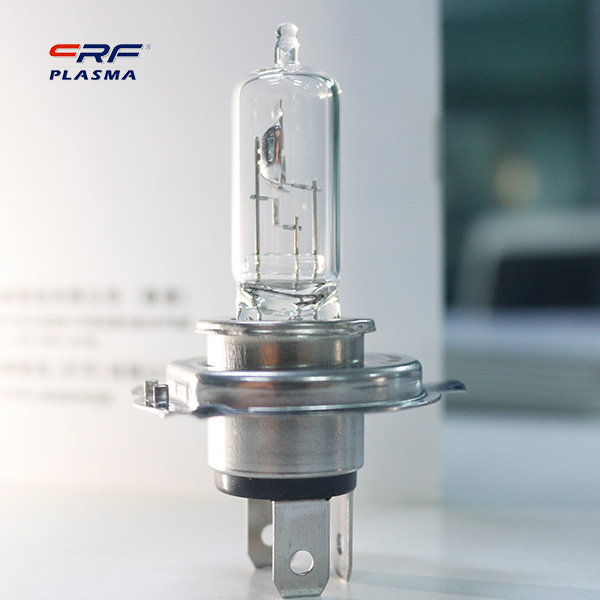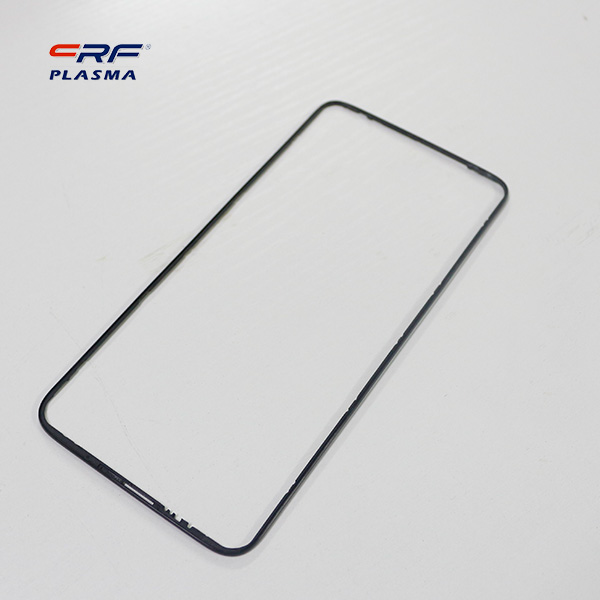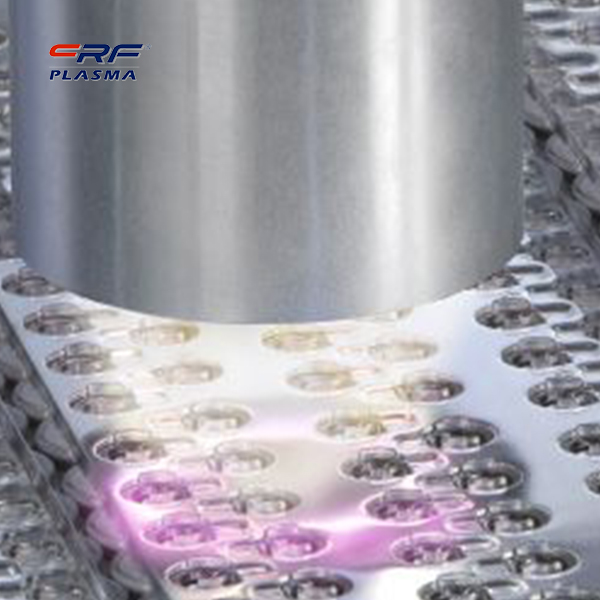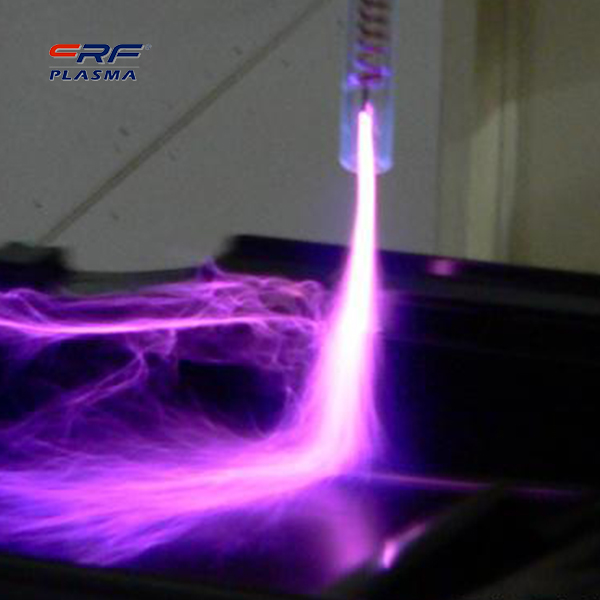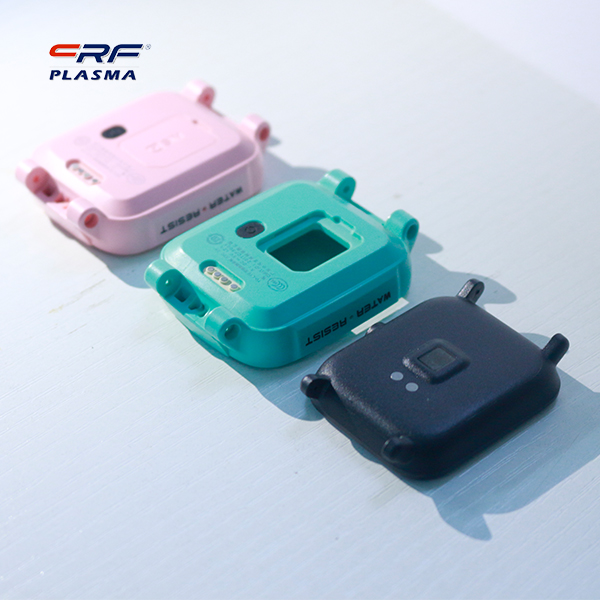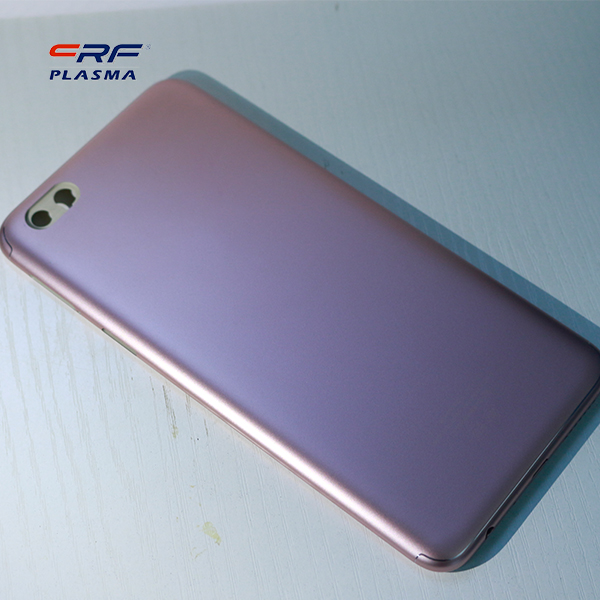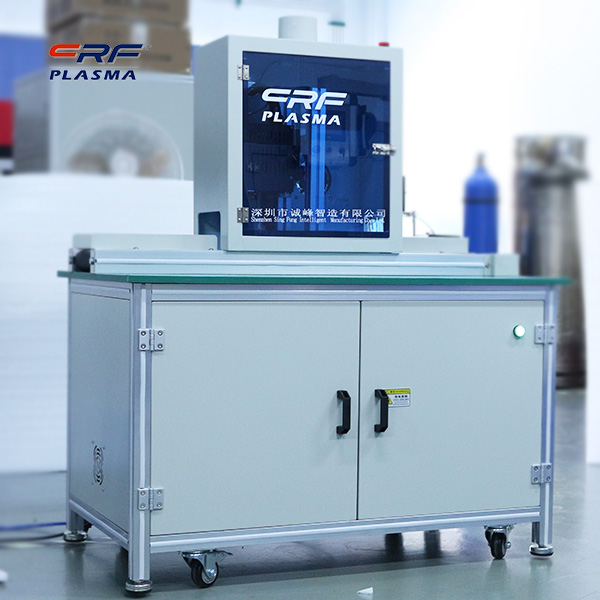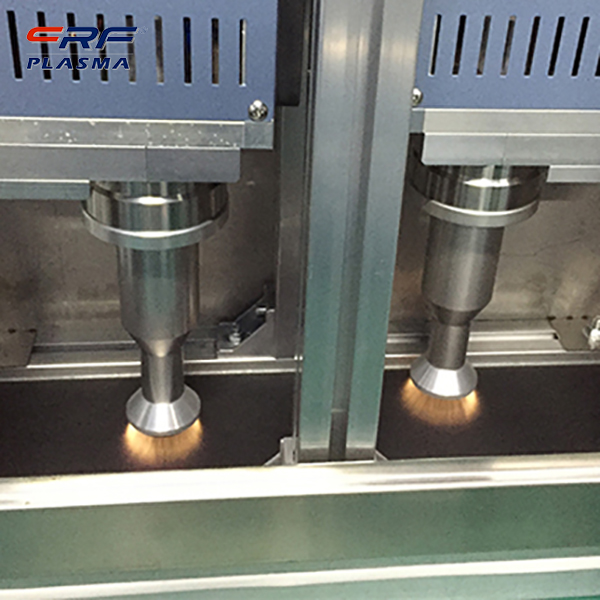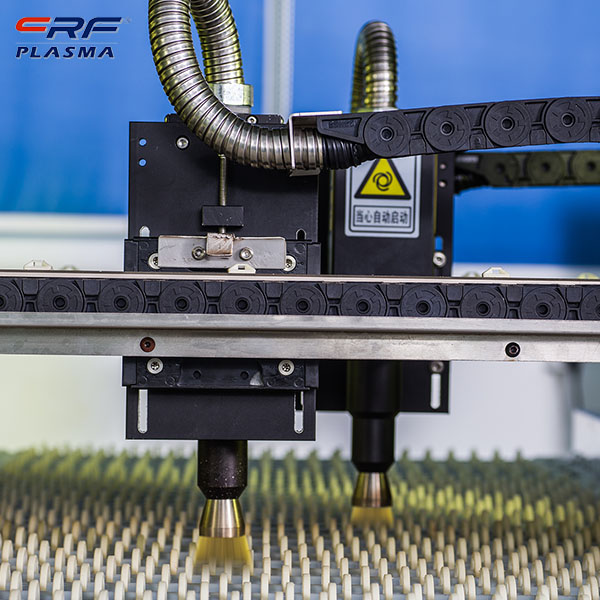
Welcome to Shenzhen Sing Fung Intelligent Manufacturing Co., Ltd.
E-mail:shaobo@sfi-crf.com
Plasma cleaner assisted PLA surface grafting chitosan and its antibacterial properties
- Categories:Technical Support
- Author:Plasma cleaning machine-CRF plasma plasma equipment-plasma surface treatment machine manufacturer-chengfeng intelligent manufacturing
- Origin:
- Time of issue:2021-08-18
- Views:
(Summary description)Plasma cleaner assisted PLA surface grafting chitosan and its antibacterial properties: Polylactic acid (PLA) spunbonded nonwoven material is used as the base material, and a plasma cleaner is used to assist the grafting of chitosan macromolecules on the surface of PLA to improve the antibacterial properties of the PLA material. Plasma pretreatment can significantly increase the grafting rate of chitosan on the surface of PLA nonwoven materials. Polylactic acid (PLA) non-woven materials have good biocompatibility, and the waste can be completely degraded, avoiding the generation of white waste, and is conducive to sustainable development. It has been widely used in textile, medical, agricultural and other fields. However, PLA non-woven materials have certain defects in hydrophilicity and antibacterial properties, which limit their further development in the biomedical field. The modification methods of PLA mainly include copolymerization modification, blending modification, cross-linking modification and surface modification. Among many methods, plasma can be generated under normal pressure, eliminating the need for complicated vacuum systems, and only acts on the superficial layer of the material without damaging the main performance of the material. It reduces energy consumption and achieves the same effect on the material. Requirements for surface modification. Chitosan is widely present in the shells of shrimp, crabs, shellfish and other crustaceans and the cell walls of bacteria and algae. Its reserves in nature are second only to cellulose. It is a non-toxic, easily degradable, environmentally friendly natural high Molecular materials. As an antibacterial agent, chitosan has good biocompatibility, broad-spectrum antibacterial properties, high sterilization rate, and high antibacterial activity. It has antibacterial properties against Escherichia coli, Staphylococcus aureus, Bacillus subtilis, Proteus, etc. It has received a lot of attention in the field of antibacterial finishing. Plasma technology is used to pretreat the PLA spunbond nonwoven material, and then the surface of the material is finished with chitosan to improve the antibacterial properties of the PLA spunbonded nonwoven material. The surface of the unfinished PLA spunbond nonwoven material is smooth and flat. After finishing with chitosan alone, there is only a small amount of chitosan on the surface of the material, and the distribution is uneven. After plasma-chitosan combined finishing, the surface of PLA spunbonded nonwoven material is evenly coated with a large number of chitosan molecules, and the grafting effect is obviously improved. This is mainly because during the pretreatment process of PLA spunbonded nonwoven material by the plasma cleaning machine, the surface of the material introduces active functional groups such as oxygen and ammonia to improve the chemical activity of the material surface, thereby promoting PLA and The stable chemical combination of chitosan macromolecules enables the uniform deposition rate of chitosan macromolecules on the surface of PLA spunbonded nonwoven materials. The original surface of PLA spunbond nonwoven material is relatively smooth, which is not conducive to the physical adhesion of chitosan macromolecules to it, and the PLA macromolecular chain itself lacks polar groups that are prone to chemical reactions, showing high chemical inertness. Therefore, it is difficult to chemically combine with chitosan macromolecules, resulting in a very low grafting rate of PLA spunbonded nonwoven materials in chitosan solution, even when the mass fraction of chitosan is 1%, the grafting rate reaches a high value. , And only 0.95%. After pretreatment by a plasma cleaning machine, polar functional groups such as hydroxyl and carboxyl groups are introduced on the surface of the polylactic acid, which promotes the reaction between the surface of the material and the chitosan macromolecules. Therefore, after plasma pretreatment, the grafting rate of chitosan on the surface of PLA nonwoven material is significantly improved. After pretreatment by a plasma cleaning machine, the surface of the material introduces active groups such as hydroxyl and carboxyl groups, which form a stable chemical bond with the chitosan macromolecules through hydrogen bonding, which promotes the grafting of more chitosan macromolecules On the surface of PLA nonwoven materials, the antibacterial properties of PLA nonwoven materials are significantly improved.
Plasma cleaner assisted PLA surface grafting chitosan and its antibacterial properties
(Summary description)Plasma cleaner assisted PLA surface grafting chitosan and its antibacterial properties:
Polylactic acid (PLA) spunbonded nonwoven material is used as the base material, and a plasma cleaner is used to assist the grafting of chitosan macromolecules on the surface of PLA to improve the antibacterial properties of the PLA material. Plasma pretreatment can significantly increase the grafting rate of chitosan on the surface of PLA nonwoven materials.
Polylactic acid (PLA) non-woven materials have good biocompatibility, and the waste can be completely degraded, avoiding the generation of white waste, and is conducive to sustainable development. It has been widely used in textile, medical, agricultural and other fields. However, PLA non-woven materials have certain defects in hydrophilicity and antibacterial properties, which limit their further development in the biomedical field.
The modification methods of PLA mainly include copolymerization modification, blending modification, cross-linking modification and surface modification. Among many methods, plasma can be generated under normal pressure, eliminating the need for complicated vacuum systems, and only acts on the superficial layer of the material without damaging the main performance of the material. It reduces energy consumption and achieves the same effect on the material. Requirements for surface modification. Chitosan is widely present in the shells of shrimp, crabs, shellfish and other crustaceans and the cell walls of bacteria and algae. Its reserves in nature are second only to cellulose. It is a non-toxic, easily degradable, environmentally friendly natural high Molecular materials.
As an antibacterial agent, chitosan has good biocompatibility, broad-spectrum antibacterial properties, high sterilization rate, and high antibacterial activity. It has antibacterial properties against Escherichia coli, Staphylococcus aureus, Bacillus subtilis, Proteus, etc. It has received a lot of attention in the field of antibacterial finishing. Plasma technology is used to pretreat the PLA spunbond nonwoven material, and then the surface of the material is finished with chitosan to improve the antibacterial properties of the PLA spunbonded nonwoven material.
The surface of the unfinished PLA spunbond nonwoven material is smooth and flat. After finishing with chitosan alone, there is only a small amount of chitosan on the surface of the material, and the distribution is uneven. After plasma-chitosan combined finishing, the surface of PLA spunbonded nonwoven material is evenly coated with a large number of chitosan molecules, and the grafting effect is obviously improved. This is mainly because during the pretreatment process of PLA spunbonded nonwoven material by the plasma cleaning machine, the surface of the material introduces active functional groups such as oxygen and ammonia to improve the chemical activity of the material surface, thereby promoting PLA and The stable chemical combination of chitosan macromolecules enables the uniform deposition rate of chitosan macromolecules on the surface of PLA spunbonded nonwoven materials.
The original surface of PLA spunbond nonwoven material is relatively smooth, which is not conducive to the physical adhesion of chitosan macromolecules to it, and the PLA macromolecular chain itself lacks polar groups that are prone to chemical reactions, showing high chemical inertness. Therefore, it is difficult to chemically combine with chitosan macromolecules, resulting in a very low grafting rate of PLA spunbonded nonwoven materials in chitosan solution, even when the mass fraction of chitosan is 1%, the grafting rate reaches a high value. , And only 0.95%. After pretreatment by a plasma cleaning machine, polar functional groups such as hydroxyl and carboxyl groups are introduced on the surface of the polylactic acid, which promotes the reaction between the surface of the material and the chitosan macromolecules. Therefore, after plasma pretreatment, the grafting rate of chitosan on the surface of PLA nonwoven material is significantly improved.
After pretreatment by a plasma cleaning machine, the surface of the material introduces active groups such as hydroxyl and carboxyl groups, which form a stable chemical bond with the chitosan macromolecules through hydrogen bonding, which promotes the grafting of more chitosan macromolecules On the surface of PLA nonwoven materials, the antibacterial properties of PLA nonwoven materials are significantly improved.
- Categories:Technical Support
- Author:Plasma cleaning machine-CRF plasma plasma equipment-plasma surface treatment machine manufacturer-chengfeng intelligent manufacturing
- Origin:
- Time of issue:2021-08-18 22:53
- Views:
Plasma cleaner assisted PLA surface grafting chitosan and its antibacterial properties:
Polylactic acid (PLA) spunbonded nonwoven material is used as the base material, and a plasma cleaner is used to assist the grafting of chitosan macromolecules on the surface of PLA to improve the antibacterial properties of the PLA material. Plasma pretreatment can significantly increase the grafting rate of chitosan on the surface of PLA nonwoven materials.
Polylactic acid (PLA) non-woven materials have good biocompatibility, and the waste can be completely degraded, avoiding the generation of white waste, and is conducive to sustainable development. It has been widely used in textile, medical, agricultural and other fields. However, PLA non-woven materials have certain defects in hydrophilicity and antibacterial properties, which limit their further development in the biomedical field.
The modification methods of PLA mainly include copolymerization modification, blending modification, cross-linking modification and surface modification. Among many methods, plasma can be generated under normal pressure, eliminating the need for complicated vacuum systems, and only acts on the superficial layer of the material without damaging the main performance of the material. It reduces energy consumption and achieves the same effect on the material. Requirements for surface modification. Chitosan is widely present in the shells of shrimp, crabs, shellfish and other crustaceans and the cell walls of bacteria and algae. Its reserves in nature are second only to cellulose. It is a non-toxic, easily degradable, environmentally friendly natural high Molecular materials.
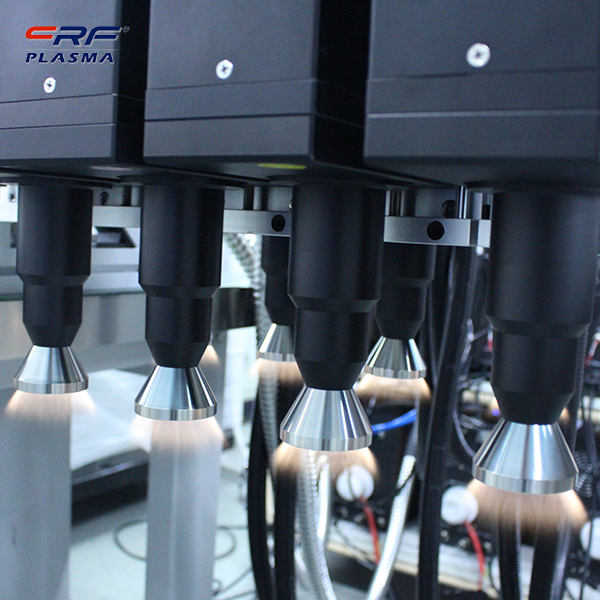 As an antibacterial agent, chitosan has good biocompatibility, broad-spectrum antibacterial properties, high sterilization rate, and high antibacterial activity. It has antibacterial properties against Escherichia coli, Staphylococcus aureus, Bacillus subtilis, Proteus, etc. It has received a lot of attention in the field of antibacterial finishing. Plasma technology is used to pretreat the PLA spunbond nonwoven material, and then the surface of the material is finished with chitosan to improve the antibacterial properties of the PLA spunbonded nonwoven material.
As an antibacterial agent, chitosan has good biocompatibility, broad-spectrum antibacterial properties, high sterilization rate, and high antibacterial activity. It has antibacterial properties against Escherichia coli, Staphylococcus aureus, Bacillus subtilis, Proteus, etc. It has received a lot of attention in the field of antibacterial finishing. Plasma technology is used to pretreat the PLA spunbond nonwoven material, and then the surface of the material is finished with chitosan to improve the antibacterial properties of the PLA spunbonded nonwoven material.
The surface of the unfinished PLA spunbond nonwoven material is smooth and flat. After finishing with chitosan alone, there is only a small amount of chitosan on the surface of the material, and the distribution is uneven. After plasma-chitosan combined finishing, the surface of PLA spunbonded nonwoven material is evenly coated with a large number of chitosan molecules, and the grafting effect is obviously improved. This is mainly because during the pretreatment process of PLA spunbonded nonwoven material by the plasma cleaning machine, the surface of the material introduces active functional groups such as oxygen and ammonia to improve the chemical activity of the material surface, thereby promoting PLA and The stable chemical combination of chitosan macromolecules enables the uniform deposition rate of chitosan macromolecules on the surface of PLA spunbonded nonwoven materials.
The original surface of PLA spunbond nonwoven material is relatively smooth, which is not conducive to the physical adhesion of chitosan macromolecules to it, and the PLA macromolecular chain itself lacks polar groups that are prone to chemical reactions, showing high chemical inertness. Therefore, it is difficult to chemically combine with chitosan macromolecules, resulting in a very low grafting rate of PLA spunbonded nonwoven materials in chitosan solution, even when the mass fraction of chitosan is 1%, the grafting rate reaches a high value. , And only 0.95%. After pretreatment by a plasma cleaning machine, polar functional groups such as hydroxyl and carboxyl groups are introduced on the surface of the polylactic acid, which promotes the reaction between the surface of the material and the chitosan macromolecules. Therefore, after plasma pretreatment, the grafting rate of chitosan on the surface of PLA nonwoven material is significantly improved.
After pretreatment by a plasma cleaning machine, the surface of the material introduces active groups such as hydroxyl and carboxyl groups, which form a stable chemical bond with the chitosan macromolecules through hydrogen bonding, which promotes the grafting of more chitosan macromolecules On the surface of PLA nonwoven materials, the antibacterial properties of PLA nonwoven materials are significantly improved.
Scan the QR code to read on your phone

TEL:0755-3367 3020 / 0755-3367 3019

E-mail:sales-sfi@sfi-crf.com

ADD:Mabao Industrial Zone, Huangpu, Baoan District, Shenzhen




